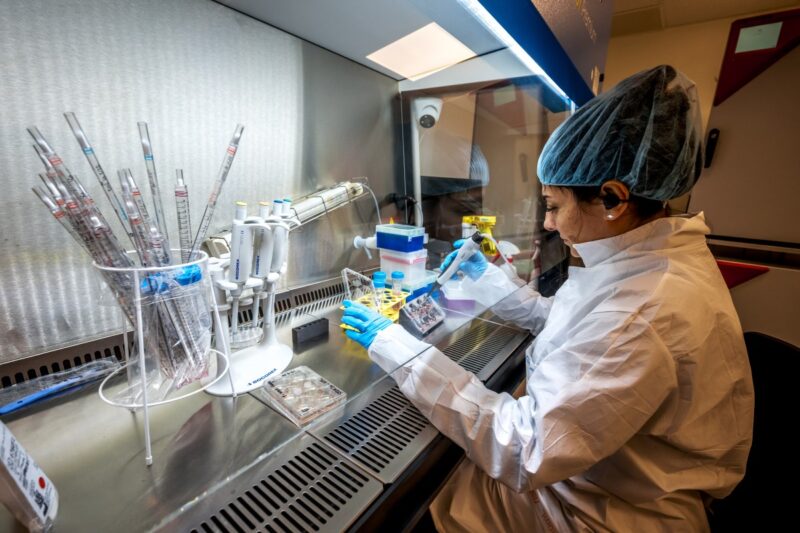
Inside a quiet lab in the Swiss town of Vevey, scientists at the start-up FinalSpark are keeping tiny clumps of living human brain cells alive, not for medical research, but to use them as rudimentary computer processors. The cells, called organoids, must be constantly fed with a nutrient-rich solution to sustain their function. Unlike silicon chips, once they die, they cannot be restarted.
This new field, known as biocomputing or “wetware”, seeks to harness the extraordinary processing potential of biological neurons. FinalSpark’s co-founder Fred Jordan believes this technology could one day replace traditional processors powering the artificial intelligence revolution.
“Instead of trying to mimic, let’s use the real thing,” Jordan told AFP during a tour of the company’s facility.
Today’s supercomputers simulate the human brain using silicon semiconductors, but Jordan says real neurons are vastly superior: “Biological neurons are one million times more energy efficient than artificial neurons.” He added that living brain cells can be reproduced endlessly in the lab, unlike the costly and limited AI chips produced by firms such as Nvidia.
Biocomputing could also help address the soaring energy consumption of AI systems, which has threatened global climate goals and pushed some tech giants to consider nuclear energy. Still, Jordan admits wetware is “a very long way from competing” with modern hardware.
That hasn’t stopped researchers from wondering, could these tiny brains ever become conscious?
To create its bioprocessors, FinalSpark starts with human stem cells, originally skin cells from anonymous donors, which are reprogrammed into neurons. These are then grouped into microscopic clumps, each only a millimetre wide, forming what Jordan describes as “the size of a fruit fly larva’s brain.” Electrodes are attached to each organoid, allowing scientists to record neural activity and send small electrical impulses. A burst of activity or silence, Jordan explains, represents the equivalent of a one or zero in digital computing.

Around ten universities worldwide are experimenting with FinalSpark’s organoids, and the company even streams their neural activity on its website.
At the University of Bristol, researcher Benjamin Ward-Cherrier used one organoid to control a small robot capable of distinguishing between Braille letters. “Working with robots is very easy by comparison,” he joked. “There’s also the fact that they are living cells, and that means that they do die.” He recalled one experiment that had to be restarted after the organoid died halfway through. FinalSpark says the organoids can survive for up to six months.
In the United States, Lena Smirnova at Johns Hopkins University uses similar brain organoids to study conditions like autism and Alzheimer’s disease, saying the technology could help find new treatments. While she called biocomputing “pie in the sky” for now, she believes its potential “could change dramatically over the next 20 years.”
As for whether the organoids could ever develop awareness, all the scientists interviewed rejected the idea. Jordan said, “This is at the edge of philosophy,” noting that FinalSpark works with ethicists to ensure responsible research. The organoids, he added, “have around 10,000 neurons, compared to a human brain’s 100 billion,” and no pain receptors.
Still, the mysteries of how the brain produces thought and consciousness remain unsolved, and for Jordan and others, that’s part of the allure.
Back in the lab, he opens the door to an incubator housing 16 organoids, each connected by a maze of tubes. As he does, the monitor beside it suddenly lights up with spikes of neural activity. The phenomenon has puzzled his team for years.
“We still don’t understand how they detect the opening of the door,” Jordan admitted.








